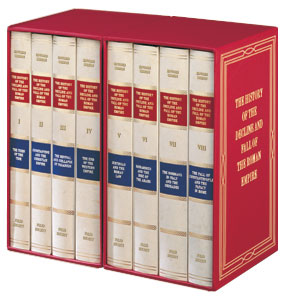 This posting is part of a series on F W Boreham and the authors who influenced his literary style. This article is the second instalment on the historian, Edward Gibbon (1737-1794):[1]
This posting is part of a series on F W Boreham and the authors who influenced his literary style. This article is the second instalment on the historian, Edward Gibbon (1737-1794):[1]Boreham declared that Gibbon’s magnum opus was “probably the greatest history ever written” and he underlined the distinctive contribution of Gibbon’s work when he wrote, “Instead of merely raking among dead men’s bones, Gibbon electrified the past and made dead men live again”[2] Boreham’s tribute recognised the drama in Gibbon and the sense of immediacy in his writing. As Boreham developed a love for history he believed that many historians lacked “the vital element” which was “the human side”[3] Even when addressing major themes, Boreham argued that writers must be attentive to the human “passion for trifles”:
Nothing appeals to men like the picturesque. We are inveterate sightseers. We love to see things ... did they wear red breeches or gray? The reader likes to have some vivid detail graphically exhibited to his fancy. As soon as the orator passes from the concrete to the abstract, his audience becomes listless and languid. Let him describe a scene or narrate an incident and they are all attention again.[4]
It was Gibbon’s narrative style, his use of “the vocabulary of perception” and his “seeing that infiltrates nooks and crannies of the history”[5] that caused Boreham to say that he “actually witnessed the gorgeous pageants” and that such writing “preserves the ecstasy and rapture of reading all through the years”.[6] As in many of the writers that Boreham admired, Gibbon possessed not only the artist’s eye but the poet’s ear. De Beer says that history for Gibbon required “sumptuous and stately utterance” and that he wrote as if he “expected that his book would be read aloud”.[7] Gibbon also demonstrated for Boreham that an important subject “required a dignity of tone worthy of the greatness” of the person or event.[8]
As has been observed in Charles Dickens and Boreham, commentators have noted that Gibbon “was helped by his extraordinary memory”. De Beer said, “He could construct a paragraph in his mind, repeat it orally, memorise it, revise and polish it, and then, and not until then, write it. There were no written drafts”.[9] His retentive memory gave him an amazing “command of antiquarian detail” and his imaginative memory enabled him to ‘see’ the events and express them in such a way that his readers could visualise them.[10]
In what ways was New Zealand contemporary J J North correct when he said that Boreham’s editorials were “fashioned on Gibbon”?[11] It is true that there was a heavy reliance on Gibbon for theme and illustration when Boreham commenced writing editorials for the Otago Daily Times. However, at the beginning of the twentieth century there was much discussion in Australasian society about the popular Gibbon themes—the past, the future, the progress of society, the empire and the monarchy. Later, Boreham wrote about many different themes and developed his own unique style.
Geoff Pound
Image: Gibbon’s The Decline and Fall of the Roman Empire
[1] Gibbon was born in England and, while he served as a member of parliament, is best remembered for his historical writings. Further biographical details may be found in the Bloomsbury guide to English literature, 391-392.
[2] Boreham, Mercury, 23 September 1933.
[3] Boreham, Mercury, 20 November 1920.
[4] Boreham, Mercury, 20 November 1920.
[5] Carnochan, Gibbon’s solitude: the inward world of the historian, 60.
[6] Boreham, Ships of pearl, 172-3.
[7] de Beer, ‘A reading of Gibbon’, 366. Harold Bond also notes how Gibbon wrote for aural reception in Bond, The literary art of Edward Gibbon, 136.
[8] Bond, The literary art of Edward Gibbon, 61.
[9] de Beer, ‘A reading of Gibbon’, 366.
[10] Burrow, Gibbon, 25.
[11] J J North, New Zealand Baptist, April 1943.


